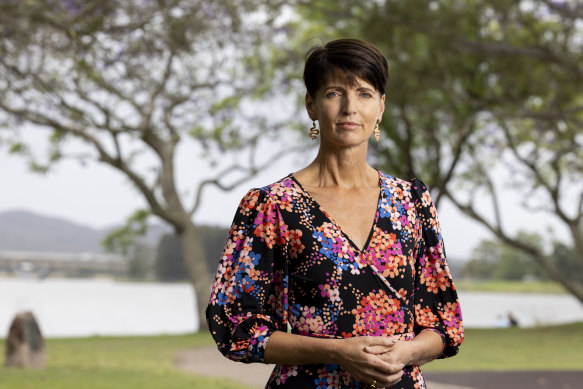- Exclusive
- Politics
- NSW
- Child protection
This was published 1 year ago
‘Spiralling out of control’: why a one-year-old is living in a NSW motel
A one-year-old baby is living in a motel in NSW supervised only by their 14-year-old sibling and the unaccredited staff of a for-profit labour hire company contracted by the state to supervise children with nowhere else to go.
In another motel, four siblings woke up to their 598th day living under the same arrangement on Saturday.

Minister for Family and Communities Kate Washington.Credit: Peter Stoop
This system, the reality for more than 100 children across NSW, has cost taxpayers half-a-billion dollars over the past two years.
And yet, according to NSW Families and Communities Minister Kate Washington, there are empty beds they could be sleeping in.
But due to what Washington called “perverse financial incentives” written in contracts with not-for-profit providers meant to supply accommodation for the most at-risk children, the state is powerless to force them to fill places despite vacancy rates as high as 47 per cent.
Seven months into the Minns government, the state’s out-of-home-care system has become one of its most pressing concerns. The system, Washington admits, has been “spiralling out of control” for several years, with soaring budgets and worsening outcomes for at-risk children.
While the government is working to fix shortages by attracting more foster carers into the out-of-home care system, Washington is also considering more drastic reforms which could see the Minns government take back control of the care of at-risk children from the labyrinth of private providers which currently operate in NSW.
“The entire outsourcing of the sector has cost more, overall,” she said.
“We have to do more to control these costs and the department and the government needs to take more control over what’s actually happening on the ground.”
Despite the government announcing a $200 million rescue package for the sector in the May budget, costs continue to rise due in part to a shortage of foster carers which have forced more children into expensive emergency care arrangements.
“The financial state of the child protection system is dire,” Washington said.

Minister for Family and Communities Kate Washington in parliamentCredit: Dion Georgopoulos
Most pressing are the emergency care arrangements which see children living in hotels, motels and caravan parks. In total, there were 141 children living in that type of emergency accommodation in October. They are supervised for by labour-hire staff who have working with children checks, but no accreditation with the Office of the Children’s Guardian.
All up, 480 children are living in various forms of emergency accommodation, an increase from 368 in October 2022.
One child has been living in emergency accommodation — in this case with an accredited provider — for 1182 days, or more than three years.
In an interview with the Herald, Washington was blunt about the role of for-profit providers, saying they were “exploiting a broken system”. But while she was “deeply uncomfortable” with the status quo, it would not change overnight: “because then where do those children go?”
“That is the real challenge right now,” she said.
“We’ve inherited a system where there is a crisis continuing to unfold, and it has been building over the past decade. We now haven’t got the services in the system that ought to be there to catch these kids [and] those for-profit providers are profiting off the back off a system that is failing vulnerable children.
“I’m deeply uncomfortable with the high-cost emergency arrangements that children are placed in. As the minister who is responsible for those children, it’s something that I am impatient to fix.”
The government is already taking small steps to bring elements of the system back into public hands by seeking to ramp up the number of foster carers employed directly by NSW. But Washington is also not ruling out bringing services provided by not-for-profit agencies back into public hands.
“There are lots of NGOs doing really good, important work across the system, and we rely on them to be able to deliver the services we need,” she said.
“But we have to look how we ensure we’re getting the best outcomes for children. We are looking at all options in terms of a major system reform.”
Washington is particularly frustrated by contracts signed by the previous government with not-for-profit operators containing clauses meaning the state cannot force them to take on children even when they have vacancies.
These clauses, which she labelled a “perverse financial incentive” because the agencies are paid whether a vacancy is filled or not, are contributing to the shortage.
On average, Washington said, vacancies in some residential settings for high-needs children are at 30 per cent. One provider had a vacancy rate of 47 per cent.
The situation has become so dire that the Herald has been told of meetings between NGOs and the department in which public servants have laid out photos of children in need of care in a bid to try to convince providers to take them.
“The department is having very robust conversations with providers about the need to reduce the vacancy rates,” she said.